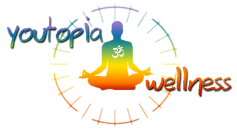Walking and Orgasm linked?


What is the link between the female orgasm and her walk?
The way we move says a lot about us. But can the way a woman walks really show her orgasmic history? How does that work?! I was listening to my Yoga teacher, Simon Borg-Olivier discussing in a recent podcast how breathing less, tensing less and relaxing more during your yoga practice allows for greater energy and blood flow. Contrary to much modern doctrine of the western health and fitness world, tensing less and breathing less is the real ticket. Not just during your yoga practice but in your everyday movement. As an interesting example, he mentioned a research study where trained sexologists observed the way women walked and how they were able to tell, just from their gait, whether or not they had experienced vaginal orgasm in their history.
“The discerning observer may infer women’s experience of vaginal orgasm from a gait that comprises fluidity, energy, sensuality, freedom, and absence of both flaccid and locked muscles.”
Yep, they were able to pick with a very high degree of accuracy 81.25% correct just from observation of the way the women, who they did not know, walked. They concluded that; “The discerning observer may infer women’s experience of vaginal orgasm from a gait that comprises fluidity, energy, sensuality, freedom, and absence of both flaccid and locked muscles.” You may be quick to laugh your pants off at this notion and yet what can we learn from it?
Fluidity of movement is equally important as power.
When it comes to stiffness in our bodies, practitioners of ancient arts such as Yoga, Chi Gong, Tai Chi, and all of the martial arts will tell you that stiffness and pain is an indication of blocked life force energy. That fluidity of movement is equally important as power and that more power can flow when we move freely from our internal energy center. The Chinese refer to this energy center as our ‘Dantian’, the yogis refer to it as the ‘Kanda’ and this space just happens to rest in our pelvis. Coincidence?
Chat with anyone who has delved into the Tantric Arts and they will say “Of course!” The vaginal orgasm has long been hailed as the holy grail of women’s sexual pleasure. According to those who have achieved its milestone, it ranks over and above other types of orgasm in terms of power, pleasure and lasting effects on physical and mental wellbeing.
A healthy level of mental, physical and emotional relaxation is a win, win.
Tension and stress in mind and body is known to dampen and or block our libido (particularly for women) so it isn’t a stretch to see how it would also follow that achieving orgasms of any kind would be affected by tensions both conscious and unconscious. A healthy level of mental, physical and emotional relaxation is a win, win. So too the effect of orgasms, particularly vaginal orgasms, is purported to help us to be happier and healthier on all levels.
Can we fake it til we make it? I am not talking about pretending to have orgasms but I am talking about how the way we think and move has been shown to help us feel better when we choose to treat our bodies with love and care. What kind of internal dialogue are you having with your body on a daily basis? Do you move in ways that create joy?
Are we exercising and or practising our yoga in a way that could be inhibiting our life force, adding to our stress and lessening our ability to relax in intimacy?
It’s a call to pay close attention to our internal awareness as we move.
Finally, the supreme goal of Yoga is to realise we are one with the divine. The physical purpose of yoga is to move energy and information throughout the body. It’s more than just blood flow. It’s hormones and chemicals and electricity and a myriad of communications. When we practise from a relaxed, present, and dare I say, softened space of being, rather than from a space of effort and striving then that information enhances our body’s natural balance toward healing and repair. Toward joy and vitality. Any movement you enjoy will create that! We can achieve greater strength, mobility, balance and mental wellbeing from a space of tensing less and breathing less during our physical yoga practice. Best of all, the more we incorporate this approach into our daily life, the happier we be!
What else would a daily conversation of loving kindness with your body create for you?

Leave a Reply